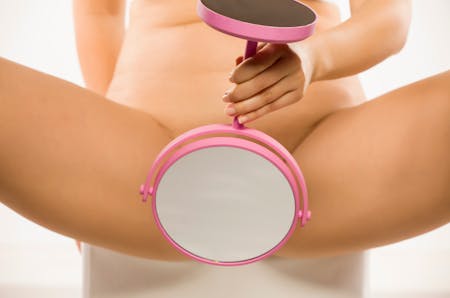PainPostpartumPregnancyTrigger Points in the Anterior Levator Ani Muscles
Bladder infection symptoms, but the urinalysis comes back reporting there is no infection?
Constant need to pee?
Pain around the ovaries?
Lower abdominal cramping?
Pain with sex, especially with deeper penetration?
Do you experience some or all of these symptoms? They can all be caused by one common denominator; a trigger point in the anterior levator ani pelvic floor muscles. The pelvic floor can be tricky to diagnose as the problem, because it often causes pain outside of the vagina. Trigger points in the pelvic floor can refer to the bladder, lower abdomen, hips, and low back. With the exception of pain with sex, the pelvic floor does not often cause vaginal pain.
A sensation of pain coming from the bladder or ovaries can be alarming, especially because we can’t see the area to determine the severity of the injury or problem. Many have undergone ultrasounds, medical tests and procedures only to be told, “Everything looks fine.” Everything may look fine, but the patient does not feel fine!
If you experience one or all 5 of the symptoms above, consider having your pelvic floor muscles assessed by a physiotherapist with specialized training in the pelvic floor. As part of the assessment, with your consent, the physiotherapist will insert a gloved finger vaginally. They will apply light pressure to each of the muscles in your pelvic floor. It is easy for you and your physiotherapist to determine whether the pelvic floor is causing your pain. As the physiotherapist applies pressure to the anterior levator ani muscles, it will reproduce (or turn on) the symptoms you are experiencing. When the pressure is released, the symptoms will diminish (or turn off.) If your pain can be reproduced during the exam, it most often can be fixed. With some education and exercises you can perform at home, many patients see complete resolution of their symptoms.
©Lynn Sweeney, Physiotherapist
Bsc. Kin, MPT



